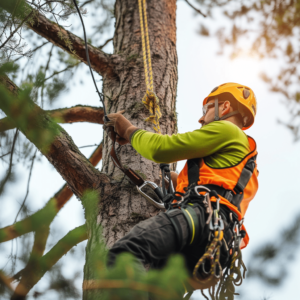The best storage option for your boat depends on the size and value of the vessel, and where you live. Storage options range from indoor, climate-controlled facilities to driveways and outdoor self-storage parking spots.

Indoor storage is the safest option, protecting your boat from sun and foul weather that can age it and keeping it out of the sightline of thieves and vandals. But it’s also the most expensive. Rent a unit close to prime locations, with Boat Storage Owasso available to provide convenient storage options.
Indoor storage safely houses a vessel during off-season months and other periods when individuals aren’t using their watercrafts. This option is a practical and affordable way to protect boats from environmental damage and extend their lifespans.
Another advantage of indoor storage is that it can help to protect a boat from pest infestations. Rodents and other pests can cause serious and costly damage to boats, destroying wiring, upholstery and other components. Infestations can also lead to the development of mildew and other bacterial issues. The sealed, protective environment of indoor boat storage minimizes the risk of pests and other damage.
Many individuals have difficulty determining how long they’ll need to store their boats, so it’s important to find a facility that provides flexible rental options. Look for facilities that offer month-to-month leases so you can reserve storage space as needed. This flexibility is especially helpful if you’re planning to use your boat on a seasonal basis, but may not be able to commit to it for the entire year.
Whether you’re looking for temporary or long-term boat storage, look for a facility that offers affordable pricing. Typically, the cost of indoor boat storage will depend on the location and size of the unit. Prices can vary greatly from one location to the next, so be sure to shop around before making a final decision.
The right boat storage facility will offer a range of unit sizes that accommodate all types of boats and gear. Look for a storage location that offers stackable bins and other organization tools to maximize space in each storage unit. These features can help to keep items organized and easy to access, reducing the time spent searching for items. In addition, many facilities offer climate control to protect boats and equipment from temperature fluctuations that can cause damage.
Outdoor Storage
Storing your boat outdoors can be an affordable option for long-term storage. However, it does expose your watercraft to elements like snow rain and sun exposure that can cause damage over time. You will also need to invest in a protective cover, consider winterizing and ensure your boat is supported with a trailer stand or boat lift. Additionally, you may have to deal with pests like rodents and birds, as well as potential vandalism or theft.
An alternative to outdoor storage is storing your boat at home, which can provide an affordable option with direct access to your watercraft 24/7. However, this option is typically only a good option for those who have the space at their residence and/or can satisfy the requirements of their homeowner’s association. Keep in mind that storing your boat at home will not offer much protection against inclement weather, pests or thieves, though you can install a shed or garage for added security.
Drive-up self-storage units are another affordable option that allow you to back your boat into a storage unit. These units can be used to store small boats or larger watercrafts, with sizes ranging from 10’x15’ to 10’x30’. Most of these storage facilities will provide secure, ground-level, drive-up access and may include services like climate control in their monthly rates.
Dry stack storage is a more in-between option that provides structural shelter from the elements for your boat. This type of storage will usually be a little more expensive than outdoor storage, but it may offer concierge services like winterization, shrink-wrapping and more.
Some facilities also provide dry dock boat storage, which consists of a large warehouse that can accommodate boats and watercrafts of all sizes. This type of storage can be a great option for those who live in an area with limited space, as it can save on a lot of cost and maintenance by keeping your boat out of the water and protected from weather.
Many facilities provide a wide range of storage and maintenance options to their clients, including cleaning, waxing, hauling, and preventive maintenance services. These additional services can add up to significant costs, but they can help you maintain the condition of your boat and extend its life.
Boatyard Storage
Boatyard storage is a less expensive option that allows owners to store their boats on land instead of in the water. Many marinas offer this option, and it is also available from independent storage facilities.
When choosing a facility, look for one that is well-maintained and clean. If you see a boatyard that looks rundown and disorganized, skip it and find another. Also, consider how other boats are stored and whether or not the boatyard offers any protection from weather elements.
Another option for boat storage is indoor “high and dry” storage, which can be found at some marinas. This option stores boats in warehouses on racks. It can be a convenient option for boaters who want to avoid tying up their boats in the water but are not ready for a full-blown winter maintenance program. However, a downside of high and dry storage is that you must wait for a forklift to retrieve your boat. This can be time-consuming during busy times. It is also important to ask a warehouse how long it typically takes for a boat to be retrieved and to find out whether or not they can accommodate advanced requests for retrieval.
Lastly, some boat owners prefer to keep their boats in a garage or on their own property. They may use a dock if they have waterfront property or trailer their boat back to their home after each use. Regardless of where they keep their boat, it is important to wash it thoroughly after every use to remove salt and other harsh chemicals from the surface of the boat.
Investing in a storage shed on your own property can save you hundreds or even thousands of dollars a year, which is a considerable amount of money when compared to paying a monthly fee for offsite boat storage. Moishe’s Self Storage can provide a number of storage shed accessories that help maximize space, organize equipment and tools, and make it easy to access your boat for routine maintenance to extend its lifespan. We also take security seriously, and offer 24/7 access to ensure that your belongings are always secure and within reach.
Trailer Storage
Ownership of a boat or RV provides a whole lot of fun and excitement. However, it’s not all day cruises and open water adventures; there are some major responsibilities that come along with owning one of these large vehicles. One of the most significant is finding somewhere to store it when it’s not in use. Whether it’s a storage space in the backyard, in a garage or at an off-site facility, the right place to keep a boat can help avoid damage and prolong the life of this expensive toy.
Boat and RV storage is a distinct market within the self-storage industry that’s characterized by different customer expectations than traditional self storage. Customers are looking for a lot more space, concierge services and other amenities in their storage solutions than those offered in a standard self-storage unit. They may also be willing to travel a much larger distance than what they would for a storage unit, especially if a specific boat or RV requires specialized storage accommodations that aren’t available nearby.
One of the primary reasons why many boat and RV owners choose to seek out offsite or onsite boat storage is that these facilities provide an excellent solution for keeping their toys safe from the elements. With covered or uncovered vehicle storage, these facilities can ensure that boats are protected from rain, snow and other environmental factors throughout the year. This can prevent the need for boat wraps in the winter and for boat trailer storage, both of which can be costly if not done properly.
Another benefit of this type of storage is that it allows for a more efficient way of accessing and storing boats in the off-season. These facilities typically have an onsite boat ramp that makes it easy to get boats in and out of the water for summer cruises or off-season maintenance. Additionally, these locations are often well-known among the local boating community, making them a go-to option for seasonal boat owners.
Lastly, like indoor and outdoor storage, this is an excellent option for keeping a boat in good condition between seasons. These types of outdoor solutions are often less expensive than indoor storage, and they can offer plenty of protection from the sun and other harsh outdoor elements. These spaces can be fenced in to protect the boats from trespassing or other unwanted activities, and they often feature concrete floors for ease of use when boating or loading/unloading equipment.








